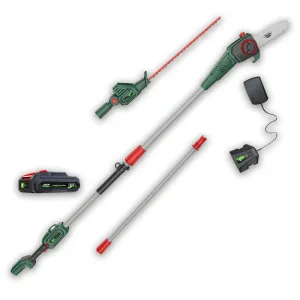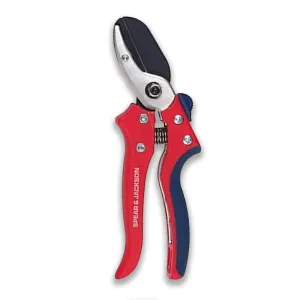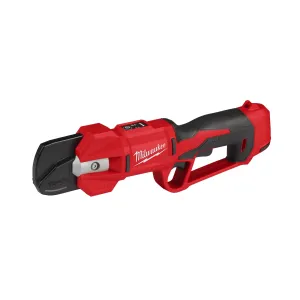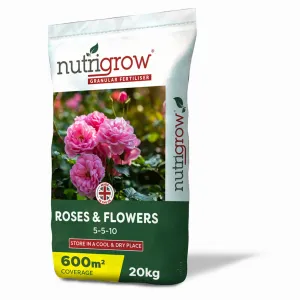Winter is often seen as a time to put the garden to rest, but despite the low temperatures, it can also be an excellent time to prune many plants as long as you avoid pruning in freezing or frosty conditions.
But while pruning during the winter months can help plants thrive in the coming spring and summer, not all plants are suitable for winter pruning. Let’s explore which plants you can prune during winter in the UK.
Fruit trees
When it comes to apple and pear trees, you’re generally good to go as long as you avoid pruning when frost is forecast. This will ensure that any fresh cuts can heal before freezing.
Grab your pruners and cut off dead or diseased twigs and branches to help maintain a good shape and aid fruit production.
Aim to create an open structure that allows light and air to penetrate the canopy, which helps prevent disease.
Fruit bushes
Blackcurrants, redcurrants, and gooseberry bushes benefit from winter pruning. Remove any dead or diseased wood and thin out overcrowded branches to improve air circulation. This will help the plants produce more fruit in the coming season.
Blueberries can also be pruned in winter to remove old, unproductive wood and encourage new growth. This will help the plants produce larger and more abundant berries.
If you have autumn fruiting raspberries, you can cut the canes right down to within 5cm of the ground. This will help encourages them to send up fresh new stems that will bear fruit in autumn.
Climbing plants
Clematis varieties that flower in mid to late summer (rather than May) can be pruned in February. Remove the long, old growth to encourage strong flowering shoots. Clematis feed can be applied in March.
Wisteria is another plant that benefits from winter pruning. Late winter or early spring is the best time to prune wisteria, as this encourages flowers to bloom in the spring.
Cut back any long or unruly shoots from the previous season to a framework of two or three buds. This ensures the plant remains manageable and promotes vigorous flowering.
Most roses benefit from winter pruning, including climbing roses. Remove any dead, diseased, or damaged wood, and cut back the remaining stems to promote healthy growth and abundant blooms in the spring.
For climbing or rambling roses, remove any dead or tangled stems, and tidy up the framework. But a word of caution with rose pruning - avoid cutting back too hard if the weather is particularly cold, as this could damage the plant. Apply rose fertiliser in early spring.
Grapevines should also be pruned in winter when the plant is fully dormant. By removing old wood and excess growth, you help the vine focus its energy on the next season’s fruiting. Remove the previous year’s growth to about 3-5 buds from the main cane.
Deciduous shrubs, ornamental trees and hedges
You can lightly prune hydrangeas in winter to remove old flower heads and thin out overcrowded branches. This encourages new growth and helps maintain the plant's shape.
Do remember though that over-wintering birds and bugs benefit from seed heads throughout the winter and leaving some in place can add visual and structural interest as well in the colder months.
Always check for nests before starting any garden pruning jobs and avoid pruning completely if you find one.
Many deciduous shrubs, such as spirea, cotoneaster, and viburnum, can be pruned in winter too. For ornamental grasses, winter is a great time to cut back dead growth, especially for varieties that have not been cut back in autumn. Pruning now will prevent the plant from becoming too woody and encourage fresh new growth in spring.
Deciduous ornamental trees that have outgrown their space or need shaping can be pruned in winter. This includes trees like birch and maple, which should be pruned while they are dormant to avoid excessive sap bleeding.
Use a mini chainsaw or powered pruner for those thicker or tougher twigs and small branches and dispose of garden waste thoughtfully.
Evergreen hedges like box and yew will benefit from a trim during the late winter months. This helps to maintain their shape and encourages dense growth.
Avoid cutting too hard into older wood, as this can lead to poor regrowth. Light trimming is recommended to prevent wind damage and to keep the hedge tidy.
Evergreen trees can also be shaped and thinned, but be cautious of heavy frost, as pruning too harshly can damage them.
When you’ve completed your pruning project, feed the soil around the plant to aid the production of healthy roots and robust growth come spring.
What to Avoid Pruning in Winter
While winter is great for pruning many plants, some should not be pruned during this time. These include:
- Tender or frost-sensitive plants: Avoid pruning plants like tender fuchsias, cannas, or dahlias in winter, as they are still vulnerable to frost.
- Spring-flowering shrubs: Plants like lilacs and forsythia should be pruned after flowering to avoid cutting off next season’s blooms.
Why Prune in Winter?
Pruning in winter comes with several benefits:
- During dormancy, plants are not actively growing, so pruning them causes less stress. There’s less sap flow, which reduces the chances of infection and disease.
- With many deciduous plants losing their leaves in winter, the plant’s structure is more visible. This makes it easier to identify damaged, dead, or crossing branches that could be removed.
- Pruning in winter helps prevent plants from becoming unruly in the spring. It encourages healthy growth and can improve the overall shape and appearance of the plant.
- Pruning stimulates growth in the coming growing season. With less foliage to support, plants can focus their energy on new shoots and flowers when the weather warms up.
Winter pruning is an important task for maintaining a healthy and well-shaped garden. By carefully selecting the right plants to prune, gardeners can promote strong, vibrant growth come spring.
Always remember to use the proper tools, avoid pruning in freezing weather, and ensure that your plants are dormant before cutting. With a little effort, winter pruning can set your garden up for success in the coming seasons.










